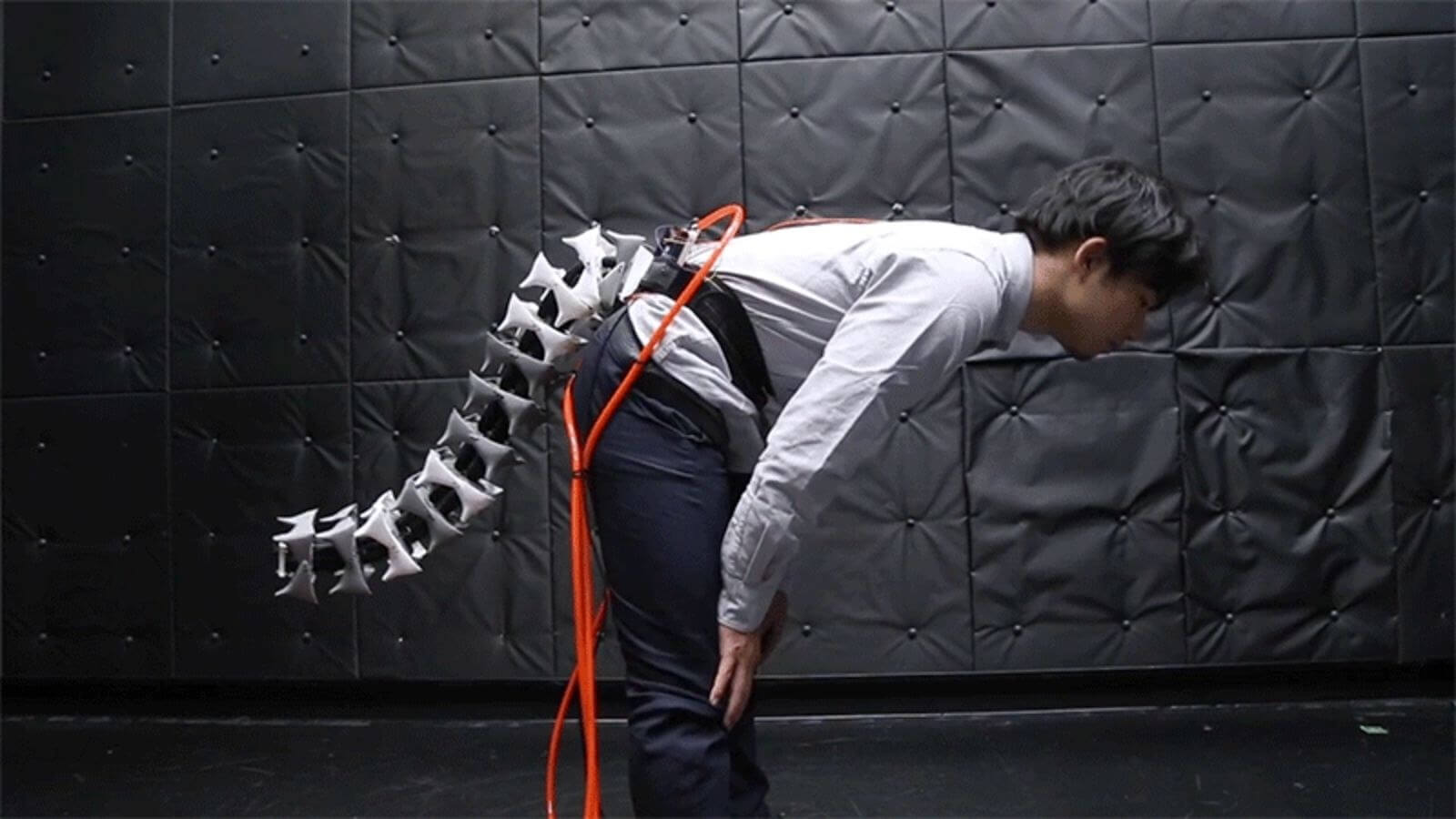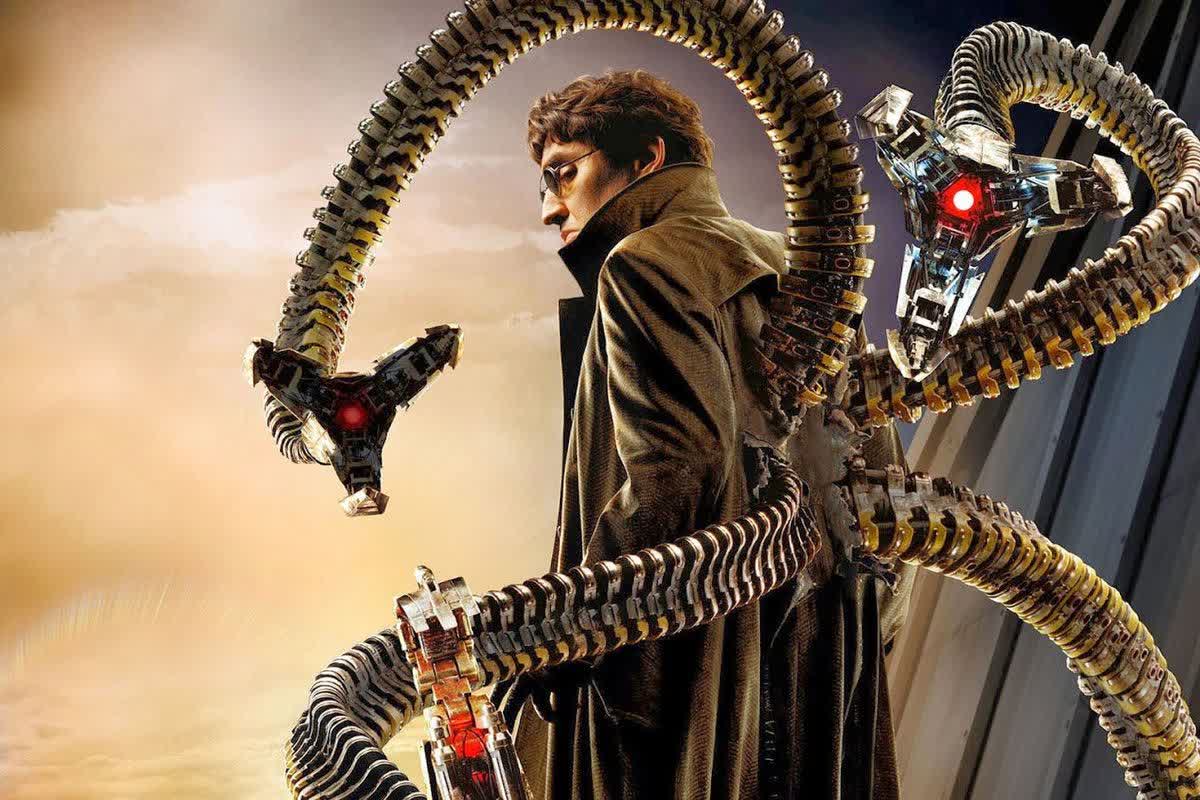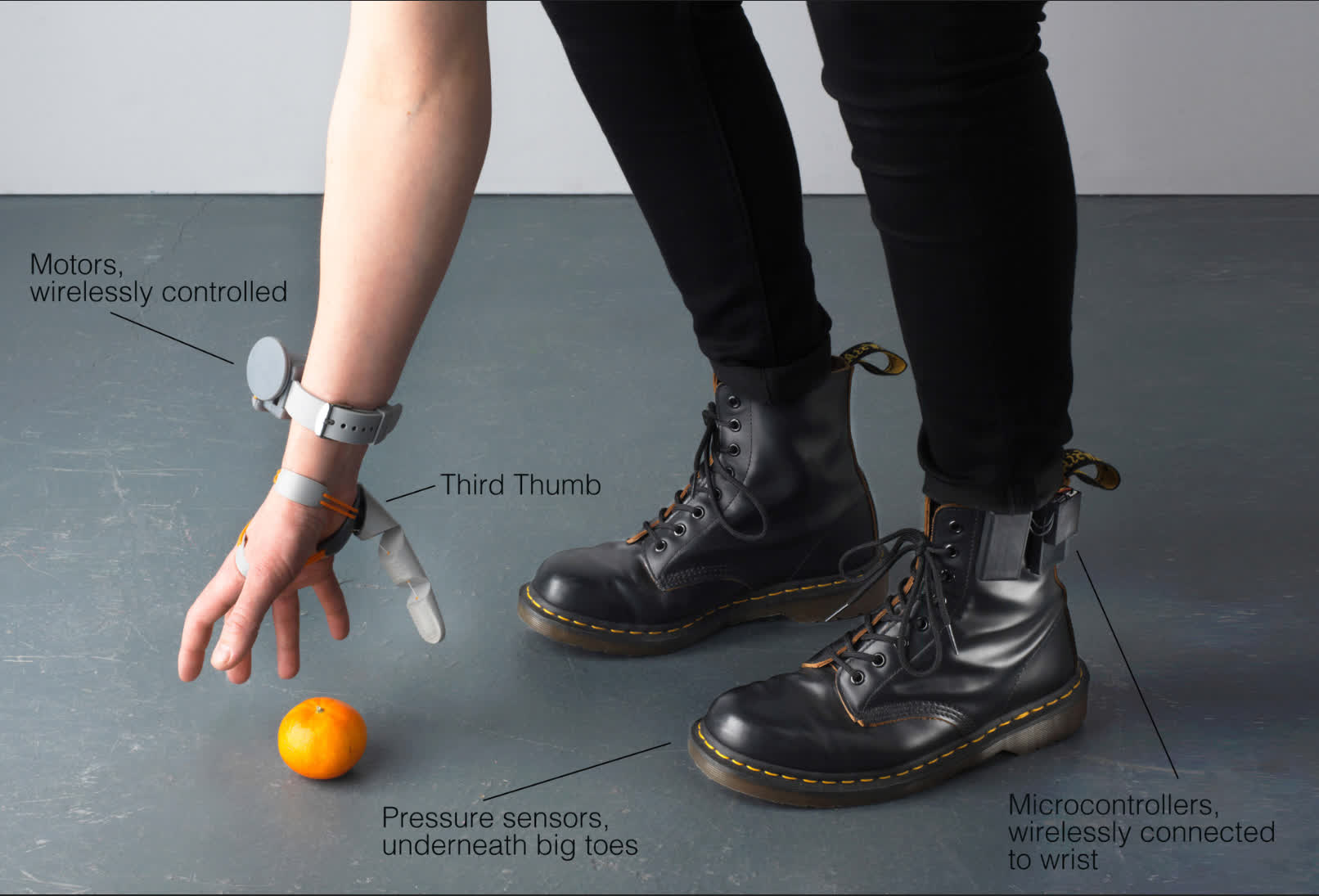Forward-looking: With artificial intelligence making huge advancements over the last few months, what's the next step toward humanity's cyberpunk-like dystopian future? According to scientists, it will be human augmentation involving robot parts being attached to our bodies, from an extra arm to help with everyday tasks to wings and tentacles that turns us into supervillains, maybe.
Before we have a vision of Cyberpunk 2077-style augs that can take out gangs of criminals or let us jump on top of houses, Tamar Makin, a professor of cognitive neuroscience at the MRC cognition and brain unit at Cambridge University, explained to The Guardian that the current approach to human augmentation is focused on increasing productivity.
"If you want an extra arm while you're cooking in the kitchen so you can stir the soup while chopping the vegetables, you might have the option to wear and independently control an extra robotic arm," she said.
Scientists have been experimenting in this field for years. One of the most famous examples is the 3D-printed 'third thumb' created by Dani Clode, a colleague of Makin's at Cambridge University. It's designed with various workplace applications in mind, including helping waiters carry extra plates and construction workers hold joists in place while hammering a nail.
Another difference from the augmented humans in sci-fi media is that the brain doesn't control these robot parts. In the case of the thumb, it's controlled by pressure sensors underneath a wearer's two big toes, a method that could cause issues.
"We're doing a lot of research at the moment to see what it does to your nervous system if you start reappropriating your toes to become an extra finger - how much [does] it affects your ability to use your toes as a toe?" Makin said.
While there has been research into using electrodes in the brain or spinal cord to control external robotic devices, Makin believes this invasive approach is ethically unjustifiable when performed on healthy humans.
Makin also said adding wings and tentacles was a possibility. "Control is the real issue. So wings are actually really simple because it's just one degree of freedom - up and down. But when you're doing something more complicated, like a tentacle, we need a lot of control."

These types of robotic attachments have been around for years. The thumb was unveiled in 2017, and you might remember the robotic tail from 2019 that's designed to improve agility and balance. The technology behind them is advancing - the recent self-healing robot finger with living skin and Raspberry Pi-powered exoskeleton is proof of that - but it could be a while before we're flying off to work and picking up cups of coffee with our tentacles.

